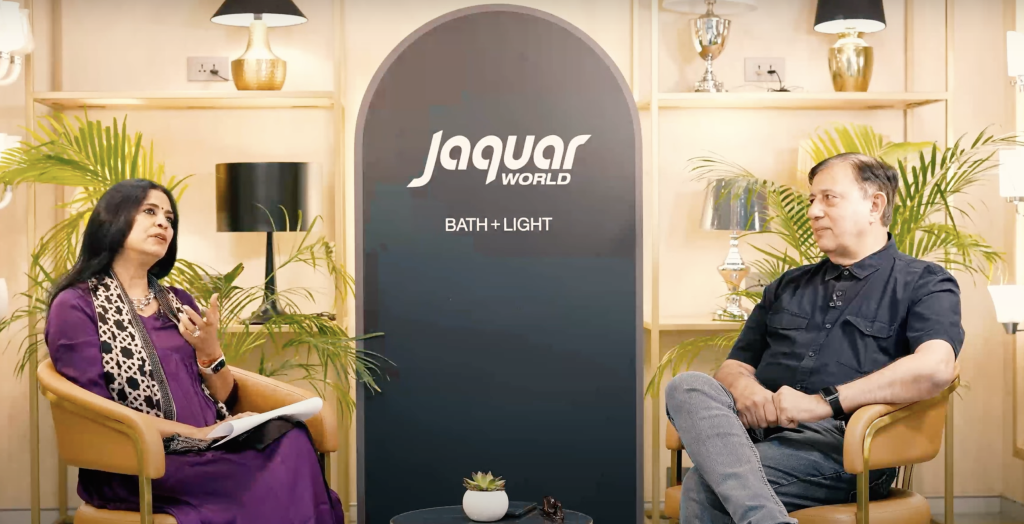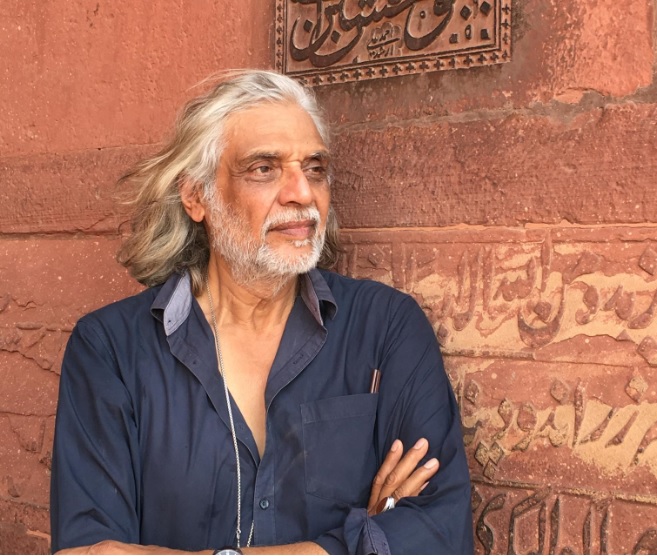Welcome to Samvaad, where art meets conversation, and inspiration knows no bounds. Here we engage in insightful conversations with eminent personalities from the art fraternity. Through Samvaad, Abir Pothi aims to create a platform for thought-provoking discussions, providing readers with an exclusive glimpse into the creative processes, inspirations, and experiences of these creative individuals. From curating groundbreaking exhibitions to pushing the boundaries of artistic expression, our interviews shed light on the diverse perspectives and contributions of these art luminaries. Samvaad is your ticket to connect with the visionaries who breathe life into the art world, offering unique insights and behind-the-scenes glimpses into their fascinating journeys.
In the lively city of Surat, nestled in the western Indian state of Gujarat, a rich history of commerce, and culture weaves its way through bustling streets and modern skylines. In this intriguing dialogue (Samvaad), Ruby Jagrut, founder of Abir India Charitable Trust and an esteemed artist, engages in conversation with Sanjay Punjabi, a prominent figure in Surat’s design and art community. Together, they embark on a journey through Surat’s multifaceted identity, exploring its historical significance, artistic endeavours, and entrepreneurial vigour. From the evolution of Surat’s textile industry to its pivotal role in global finance, Sanjay shares insights on how art, innovation, and commerce intersect in this vibrant metropolis. Through anecdotes, historical perspectives, and reflections on contemporary trends, this dialogue offers a captivating glimpse into the essence of Surat and its enduring legacy on the world stage.
Ruby: Surat has a textile and jewellery industry which which was huge and of course you you mentioned textiles as as curtains in your project…..
SP: Converting a rough diamond into a fine or polished diamond is nothing but art.
Ruby: It is a kind of sculpting, you know. You hold it in your hand and sculpt around it, and then the edges will come out correct. I see every craft, when it finds its use, becomes a product. And then, the virtue of the craft is lost, but the product is known.
SP: That story can be similarly woven about textiles. We are the ones providing 65% of India’s non-cotton man-made textile needs. In that space, we are innovating in numerous ways, though we may not term it as art. For instance, just the other day, Ashneer Grover received a gift from the Surati people for Karwachauth. It was a saree for his wife featuring a digitally printed photograph of Ashneer and his wife—beautifully done. During IPL matches, we create beautiful things as needed. Another trend is the changing textiles in all places of worship in India, be they Hindu or Muslim. This has been happening for economic reasons, but if you think about it, it requires a deep understanding of how to approach something new, like altering the Mata Ki Chunari. The trend now is crossed golden zari, showcasing a different aesthetic.
Ruby: But I beg to differ here because earlier it was all handmade, and now it is largely synthetic and machine-made. Do you think the craft community of Surat has survived this change? When we move to industrialization of any product or any craft, the very soul or the essence of the artist is lost because then it becomes a machine-made thing.
SP:Let’s discuss this point. It’s a myth that only handmade creations can be termed as art. In the 21st century, we need to understand that artists like Aparna create art digitally. For example, in one of her videos, she creates art using digital techniques. She sets up a canvas with little toys behind it in such a way that from a distance, it appears as though the toys are looking at you. However, when you get closer, all of them appear to go inside the canvas. This is an example of digital art.
Ruby: No, I’m not talking about the art art; I’m talking about the craft. People who have been, you know, there was a potter who used to make matka. Now that matka has been replaced by plastic. So, losing that to plastic, do you think we have done justice in this globalisation? Are we able to do justice to the community or a person who, for generations together, has just been trained to make matka? So, how do we justify this?
SP: So, let’s try to debate on that. Earlier, Zari embroidery was done manually, but now it is being done by machines. However, that still requires a lot of effort. Deciding on the colours to be used and what people will like is crucial. If I make a wrong combination, I won’t be able to sell it in the market. At the moment, I have to decide what Zari to be woven, what thread to be used, so it becomes an art form.
Ruby: No, I’m not arguing that it’s not art. I think that’s a debate for another time. Because I’m a painter myself, you know, you can put a banana on the wall and paste it with duct tape and say it’s art. So that’s again a different kind of argument altogether, and we can discuss and debate that as well.
SP: what is NFT do you know that?
Ruby: Of course!
SP:So NFTs have nothing to do with that, but still, the mind is applied. So wherever the mind is applied but the hand is not, it is still considered art. So the new generation, we need to let go of the dogmas and belief systems that something is only art if made by hand. What a carpenter makes by hand is considered art, but something made by a CNC router machine is not. In the Ram Mandir, not a single pillar is handmade, yet it is beautiful. Even in the Swaminarayan Temple, which is one of the largest temples in the world and currently under construction in Surat, all the carvings we appreciate are not done by hand, but still, we appreciate the Swaminarayan Mandir. We are going to appreciate, on the 22nd of January, the Ram Mandir inauguration, and you can see that nothing is made by hand. Everything is done by a CNC router machine.”
Ruby: “Yes, I don’t think the objective of this interview is to debate about manmade and machine-made. The objective of the interview is about art, and you are a believer in art. I’m a believer in art, and I’m a practising artist. So I think what I would like to conclude this discussion before it turns into a debate is, what is your message to young artists and young designers, and how would you like them to perceive their careers in the future?
SP: The design or art happens here (mind) and it has been expressed in a different form, in different media. So, the thinking process or the exploration of what you are thinking is not important; thinking is more important. Any person or artist applies the mind and creates something out of that, and that has to be considered art. The artist needs to think more, think innovatively, think differently, and also try to survive in their way. They have to adapt to a different mindset, and that is the entrepreneur mindset.
Ruby: Yes, that’s what I wanted to underline and conclude this interview. I strongly believe that artists need to have an entrepreneurial approach towards their art, thinking about how they can grow their practices, reach out to the right people, and be available whenever there’s a demand. We have seen artists like Anish Kapoor, Jeff Koons, and Subodh Gupta who have done that and achieved success in a very handsome manner. On that note, I’m going to say thank you to Sanjay Punjabi because it’s been a very tempting subject he has touched upon. If we can keep talking, this interview could last for three hours, so I think we’ll conclude here. But this debate and this talk should continue, and we should meet more often to discuss and debate about it. So, thank you so much for giving your time. We are really happy to hear from you because you are a designer who not only wants to indulge in his design but also wants to make a difference to the city. You are someone who has introduced different aspects of different art forms to the city, giving the city a thinking and beating heart which can think of art and express art. So, thank you so much, Sanjay, and you’re doing some good work with the Tapi Festival and the film festivals of Surat. We should talk about that more often, and I think we should meet more often. So, thank you so much for your time. Thank you. Thank you so much.
Surat’s Art Renaissance: A Journey from Textiles to Cultural Transformation (Part-1)





